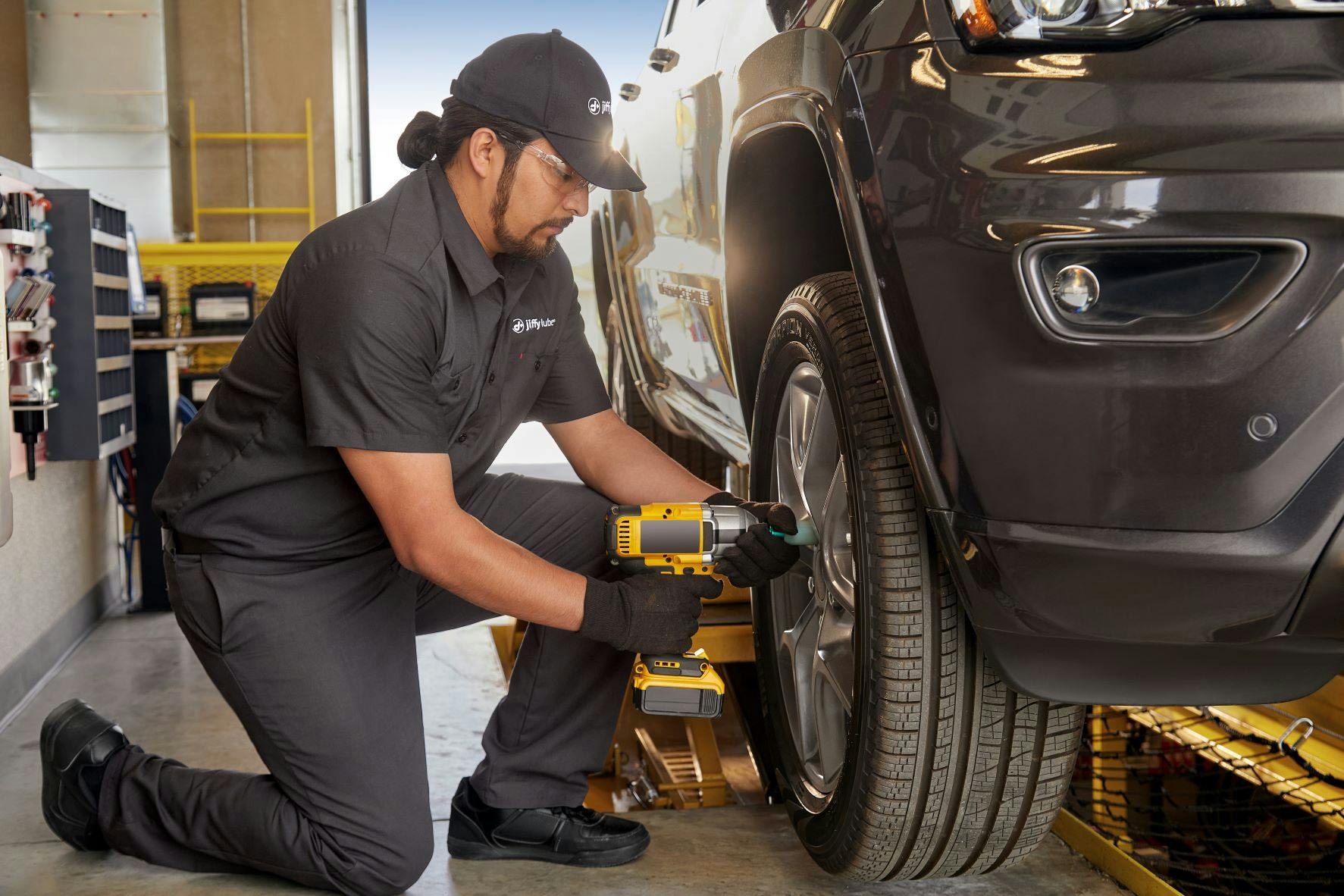How you roll depends on your tires. They affect your steering, the smoothness of your ride, and even fuel economy. Because tires matter so much to your safety and comfort, they deserve proper care, including regular tire rotation. So, let’s look at what it is, why it matters, and how often should you rotate your tires.
What Is Tire Rotation?
Simply put, it’s repositioning each tire. Think of your vehicle as a rectangle. The weight is not distributed evenly to all four corners, so tires wear differently depending on their position. For example, the tires on the front of a front-wheel drive (FWD) vehicle take on a greater portion of the torque and friction needed to turn, accelerate, and brake. Regularly rotating your tires:
- Helps them wear more evenly
- Enables them to retain their traction longer
- May also be required to keep your tires covered by the manufacturer’s warranty
How Often Should You Rotate Your Tires?
It’s generally recommended that tires be rotated every 6,000 to 8,000 miles. (Since oil changes are often scheduled for every 6,000 miles, why not have your tires rotated when you bring your car in for the Jiffy Lube Signature Service® Oil Change?) For the tire rotation schedule for your specific vehicle, refer to the owner’s manual. Can’t find it? A Jiffy Lube® technician will be happy to access this information for you.
How They’re Rotated Is As Important As How Often to Rotate Tires
Tires should be rotated using the pattern recommended in the manufacturer’s guidelines. Wait! You didn’t know there’s more than one tire rotation pattern? There are 5:
- Rearward cross
- X-pattern
- Forward cross
- Side to side
- Front to back
Here’s what impacts which rotation is used:
- Manufacturer’s guidelines
- The type of tire
- If the vehicle is front, rear, all, or four-wheel drive
- Whether the tires are directional or non-directional
- If the tires the same size on the front and rear
- Whether the vehicle has a full-size spare
For non-directional tires of uniform size …
- Forward cross is the most common pattern for front-wheel drive vehicles. The front axle tires are moved up diagonally to the opposite side of the front axle.
- Rearward cross is for vehicles that are 4-wheel, all, or rear wheel drive. The rear tires are moved to the forward axle and kept on the same side of the vehicle while the front tires are moved to opposite sides of the rear axle.
- X-pattern is recommended for front-wheel drive vehicles, like light-weight trucks and sedans. All tires are moved diagonally, meaning tires are switched from one axle to the opposite axle, as well as being repositioned from one side to the other.
For uniform size, non-directional tires with a full-size spare …
- Be sure to rotate the spare along with the other four tires. This is especially important for all-wheel or four-wheel drive vehicles, where even small differences can strain the car’s drive train.
- Rearward cross is recommended for rear-wheel or four-wheel drive vehicles. Both rear axle tires move directly forward to the front axle while the spare tire moves to the right side of the rear axle. The right front tire moves diagonally back to the left side of the rear axle while the left front tire becomes your new spare.
- Forward cross is recommended for front-wheel drive vehicles. The rear tires are moved diagonally to opposite sides on the front axle, while the right front tire becomes the new spare tire. The spare tire is positioned on the right side of the rear axle while the left tire on the front axle is moved directly back to the left rear position.
For high performance and directional tires …
- Side-to-side is recommended for differently sized performance tires on the front and rear axles. All tires are switched with their same-sized partner and remain on the same axle. The two rear tires switch to the opposite side with one another while the two front tires do the same.
- Front-to-back is recommended for directional tires. All tires are moved from one axle to the other but remain on the same side of the vehicle. For example, the front left tire is moved over to the left side of the rear axle, while the rear left tire is repositioned on the left side of the front axle.
Why Choose Jiffy Lube for Tire Rotation?
If you aren’t sure what kind of tires you have or which way they should be rotated, turn to the technicians at Jiffy Lube. Each technician undergoes comprehensive, ongoing training, so you’re in good hands.
Here’s what you can expect when you bring your car to one of the 2,000+ Jiffy Lube locations and request a tire rotation.
- Tire treads are checked for both depth and condition
- Sidewalls (both inner and outer) are visually inspected
- Tires are inflated to the proper level, as indicated in the vehicle owner’s manual or on the tire placard or sticker on the doorjamb or in the glove box
- The vehicle goes up on a lift
- All tires are removed and rotated (including the spare)
- Tires are installed, and their fasteners are torqued to manufacturer specifications
- As an additional safety check, fastener torque is rechecked by a second member of the team

Remember, You Can Always Turn to Jiffy Lube for Tire Care
The team at Jiffy Lube help you follow the tire industry’s recommendations so your vehicle can retain its “as designed” performance.
Read More About It
Now you know how often to rotate tires to extend their life. But do you know how long your tires should last? Find out here.
Please note: Not all services are offered at each Jiffy Lube® location. Please check with your local Jiffy Lube® service center or visit jiffylube.com for specific services offered.


